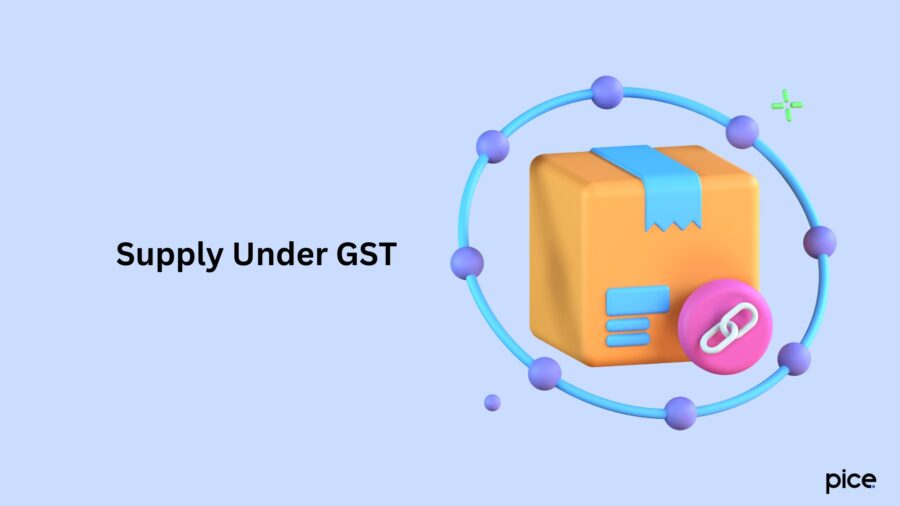Mixed Supply Under GST Section 2(74) of CGST Act
- 18 Nov 24
- 9 mins

Mixed Supply Under GST Section 2(74) of CGST Act
- Supply Under GST
- Mixed Supply Under GST
- How to Identify if the Supply Is a Mixed Supply?
- Time of Supply in the Case of Mixed Supplies
- How to Determine Whether the Supply is Composite or Mixed in GST?
- What Is a Bundled Supply?
- How to Determine if It Is Naturally Bundled, i.e., It Cannot Be Separated?
- Difference Between Mixed Supply and Composite Supply
- Conclusion
Key Takeaways
- Mixed supply bundles of independently sellable goods/services are taxed at the highest applicable GST rate.
- Composite supply involves naturally bundled items taxed based on the principal supply's GST rate.
- Mixed supply is identified when goods/services aren't naturally bundled in business practices.
- Time of supply depends on whether goods or services in the mixed supply attract the highest tax rate.
- Proper classification of supply ensures accurate GST compliance and optimized pricing strategies.
Mixed supply under GST Section 2(74) of the CGST Act is an essential concept for businesses that sell bundled goods or services. Unlike composite supply, a natural bundle of goods and services, mixed supply involves a combination of goods and services that a service provider can sell separately.
The goods and services are independent of each other. Having a proper knowledge of these two concepts is vital, as the tax implications vary from one another.
In this blog, we will discuss the types of supply, mixed supply, how it differs from composite supply, time of supply and several other associated concepts.
Supply Under GST

'Supply' under Goods and Services Tax includes all goods and services that are supplied and have GST applicability. The transaction can be of the following types:
- Rental
- License
- Sale
- Import of services
- Barter
- Transfer
- Disposal
- Lease
- Exchange
This list includes imports as well. Imports can be of any kind. Additionally, activities which are listed in Schedule 1 of the GST Act, 2017 are also a part of this list.
Mixed Supply Under GST
Mixed supply is one category of supply where a taxable person offers two or more individual supplies of goods or services as a bundle, but they can also sell these products separately. In the case of mixed supply, principal supply refers to the product or service on which the highest GST rate is applicable.
For instance, if a package containing sweets, chocolates, canned foods, dry fruits, fruit juices, and cold drinks is sold not for separate prices but for a single price, it will be a mixed supply. You can sell each of these products separately, as none of them are dependent on each other.
Example 1: If a shop offers a free bucket with a purchase of detergent, it will be a mixed supply. You can also purchase a bucket and a packet of detergent separately. The highest GST rate out of these items will be applicable. Here, detergent has a higher GST rate of 28% and it will apply to the entire bundle.
Example 2: If you sublet a house under a single rent deed, with the tenant using the first floor for residential purposes and the second floor for operating a business, this arrangement is not considered a natural bundling of services in the ordinary course of business. As a result, it qualifies as a mixed supply. Since the entire house is leased under one rent deed, the GST rate of 18% will apply to the entire rental amount.
How to Identify if the Supply Is a Mixed Supply?

Here is how you can identify if the supply is mixed:
- Taxable supplies are not bundled naturally in the normal course of business.
- The supply must not be a composite supply.
- The products can be supplied independently or separately.
Time of Supply in the Case of Mixed Supplies
If a service has the highest rate of tax applicability, then the mixed supply is a supply of service. In this case, the legal provisions of time of supply of services would be applicable. Similarly, mixed supply will be a supply of goods if the highest tax rate is levied on goods. The time of supply will be taken as the supply of goods as per the GST provisions.
How to Determine Whether the Supply is Composite or Mixed in GST?
Before determining whether a supply is a mixed supply or a composite supply, let us understand how to determine a composite supply. A supply of goods or services will be a composite supply based on the following criteria:
- It is a natural bundle of supplies. This means that these goods are provided together in the business and cannot be separated.
- It is a supply of two or more than two goods and/or services.
- The nature of service or nature of products will be such that one service would be the main service and other services are either ancillary supply or incidental supply.
- The majority of the vendors provide these goods or services as a package.
Therefore, to determine if the supply is mixed or not, you will first have to rule out the possibility of it being a composite supply. If you can sell the goods or services separately and they are not usually bundled in the due course of business practices, it is a mixed supply. Let us understand the classification of supplies with examples.
Composite supply: A luxury hotel offers laundry services along with its accommodation. This is a composite supply because the laundry cannot be availed separately without the lodging service. In this case, the laundry is the ancillary service and accommodation is the primary service.
Mixed supply: If a kit contains a watch, wallet, a pen and a tie, it will be a mixed supply. You can sell all these items separately. The item with the highest rate of GST will be the principal service and that tax rate will apply to the entire supply.
GST Rate on Mixed Supply
In a mixed supply, the item or service with the highest applicable rate is considered the principal supply, regardless of whether it is the main part of the bundle. The entire mixed supply is then taxed at the GST rate applicable to the principal supply.
For instance, if a gift box contains sweets, dry fruits, canned foods, fruit juices and soft drinks and all of these are given for just a single price and not a mixed price, it is a mixed supply. You can sell these supplies separately as well. Out of all the items, the highest GST rate of 28% applies to soft drinks. You can consider soft drinks as the predominant supply, and the recipient of supply will have to pay 28% of the entire supply.
What Is a Bundled Supply?

A bundled supply is a combination or a bundle of products and/or services. The rule states that “if various components of a bundled service are bundled together in the ordinary course of business, it shall be treated as the supply of a single service that gives the bundle its vital character.".
For instance, a hotel offers a package that includes breakfast along with accommodation, which is a natural bundling of services in the hotel industry. In this case, accommodation is the primary service, even though breakfast and accommodation may be taxed at different rates.
How to Determine if It Is Naturally Bundled, i.e., It Cannot Be Separated?
Here's how you can figure out if a supply is naturally bundled, meaning the services cannot be availed separately:
- If most of the suppliers in the industry supply a package of goods or services, it will be a bundled supply. For instance, in the case of air transport, many airlines provide food during travel, which comes under transport charges. The nature of these bundled services will help you determine whether they are naturally bundled or not. Mostly, these have only one price and you cannot avail selective services at a lower cost. You will have to avail the entire supply with the services at the given cost.
- If customers expect certain or purchase certain services in a package, then it will be naturally bundled. For instance, most professionals participating in a business convention or conference expect a package of food, auditorium and hotel accommodation together. This is a naturally bundled supply and you cannot separate the components.
Difference Between Mixed Supply and Composite Supply
Here is a table outlining the key difference between mixed supply and composite supply:
| Basis of Distinction | Mixed Supply | Composite Supply |
| Applicable GST Rate | Highest GST rate among all the items in the supply | Correct GST rate is based on the principal supply |
| Main item | Good or service with the highest rate of tax | Principal product |
Conclusion
Mixed supply under GST plays a crucial role in determining the applicable tax rates. The highest tax rate out of the constituent supplies in the package can impact business compliance and pricing strategies.
To keep up with the changing business dynamics, it is important to stay aware of the regulations that determine whether the supplies fall under mixed or composite supply.
💡If you want to streamline your payment and make GST payments, consider using the PICE App. Explore the PICE App today and take your business to new heights.




















